
System on Chip vs. System on Module: Unveiling main differences between them
August 08 2023  1785
1785
Inquiry
Global electronic component supplier AMPHEO PTY LTD: Rich inventory for one-stop shopping. Inquire easily, and receive fast, customized solutions and quotes.
QUICK RFQ
ADD TO RFQ LIST
In this blog post, we will discuss the differences between SoCs and SoMs, as well as their advantages and disadvantages. We will also look at some of the application examples where SoCs and SoMs are used.
What is a System on Chip?
A system on chip (SoC) is a single integrated circuit (IC) that houses all or the majority of the parts of a computer or other electronic system. The CPU, RAM, input/output (I/O) interfaces, and secondary storage interfaces are all included in this. SoCs can be utilized in many different applications, including embedded systems, IoT devices, and mobile phones. They are typically smaller and more energy-efficient than conventional multi-chip systems.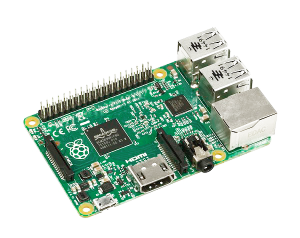
What is a System on Module?
A system on module (SoM) is an electronic circuit that combines all of a computer system's critical parts onto a single module. The I/O controller, storage, and processor are all included in this. Since SoMs are often much smaller than conventional embedded boards, it is simple to link them to a carrier board to form an entire system. In contrast to SoCs (system on chips), which combine all of these components onto a single chip, SoMs just need power to function. They are therefore a more adaptable and affordable option for a variety of applications. SoMs might be compared to electronic motherboards that contain the essential components of a MINI PC. In order to construct a system-on-a-chip in a particular field, they often integrate CPUs, storage, and pins and are attached to a compatible carrier board using pins.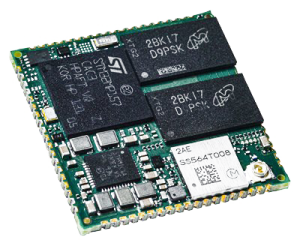
Differences between SoCs and SoMs
- Architecture: SoCs are single chips, whereas SoMs are modules that house numerous chips.
- Components: While SoMs often only have the CPU, memory, and I/O ports, SoCs typically have every component required for a complete system.
- Applications: SoMs are often utilized in situations where flexibility is needed but size and power consumption are also critical, whereas SoCs are typically employed in portable devices.
- Cost: In general, SoCs are more expensive than SoMs.
- Complexity: The design and manufacturing of SoCs are often more difficult than those of SoMs.
Video related to System on Chip vs. System on Module
Advantages and Disadvantages of SoCs
Advantages of SoCs
- Smaller footprint and space requirements: SoCs typically have a much smaller footprint than traditional embedded systems, as all of the components are integrated onto a single chip. This can save space and weight in system designs, which is important for applications where space is limited, such as in embedded systems for vehicles, drones, and other mobile devices.
- Higher performance and flexibility: SoCs can often offer higher performance and flexibility than traditional embedded systems, thanks to the integration of multiple components onto a single chip. This can be important for applications that require high processing power or that need to be customized for specific requirements.
- Cost-effective for mass production: SoCs can be cost-effective for mass production, as the design and development costs can be spread over a large number of units. This makes them a good choice for applications where a large number of units will be needed, such as in industrial automation and consumer electronics.
- Greater system reliability and lower power consumption: SoCs can offer greater system reliability and lower power consumption than traditional embedded systems, thanks to the integration of multiple components onto a single chip. This is important for applications where reliability and power efficiency are critical, such as in medical devices and security systems.
- Reduced development time and risk: SoCs can help to reduce the development time and risk of new product development, as they provide a pre-validated platform that can be quickly customized for specific requirements. This can be a major advantage for companies that need to bring new products to market quickly.
Disadvantages of SoCs
- Higher initial cost: The initial cost of an SoC can be higher than that of a traditional embedded system. This is due to the fact that SoCs require the integration of multiple components onto a single chip.
- Limited upgradeability: Once an SoC is installed, it is not possible to upgrade individual components. This can be a disadvantage if the system's requirements change over time.
- Not suitable for all applications: SoCs may not be suitable for all applications. For example, they may not be suitable for applications that require high levels of security or that need to be customized for extreme environments.
- Vendor lock-in: SoCs are typically manufactured by a single vendor. This can make it difficult to switch vendors if the need arises.
- Lack of standardization: There is no single standard for SoCs. This can make it difficult to choose an SoC that is compatible with other components and systems.
Advantages and Disadvantages of SoMs
Advantages of SoMs
- Smaller form factor and weight: SoMs are typically much smaller and lighter than traditional embedded boards, which can save space and weight in system designs. This is important for applications where space is limited, such as in embedded systems for vehicles, drones, and other mobile devices.
- Higher performance and flexibility: SoMs can often offer higher performance and flexibility than traditional embedded boards, thanks to the integration of multiple components onto a single chip. This can be important for applications that require high processing power or that need to be customized for specific requirements.
- Cost-effective for mass production: SoMs can be cost-effective for mass production, as the design and development costs can be spread over a large number of units. This makes them a good choice for applications where a large number of units will be needed, such as in industrial automation and consumer electronics.
- Greater system reliability and lower power consumption: SoMs can offer greater system reliability and lower power consumption than traditional embedded boards, thanks to the integration of multiple components onto a single chip. This is important for applications where reliability and power efficiency are critical, such as in medical devices and security systems.
- Reduced development time and risk: SoMs can help to reduce the development time and risk of new product development, as they provide a pre-validated platform that can be quickly customized for specific requirements. This can be a major advantage for companies that need to bring new products to market quickly.
Disadvantages of SoMs
- Higher initial cost: The initial cost of a SoM can be higher than that of a traditional embedded board. This is due to the fact that SoMs require the integration of multiple components onto a single chip.
- Limited upgradeability: Once a SoM is installed, it is not possible to upgrade individual components. This can be a disadvantage if the system's requirements change over time.
- Not suitable for all applications: SoMs may not be suitable for all applications. For example, they may not be suitable for applications that require high levels of security or that need to be customized for extreme environments.
- Vendor lock-in: SoMs are typically manufactured by a single vendor. This can make it difficult to switch vendors if the need arises.
- Lack of standardization: There is no single standard for SoMs. This can make it difficult to choose a SoM that is compatible with other components and systems.
SoC Examples
General SoC Examples
- Smartphones: Smartphones typically contain a SoC that integrates the CPU, memory, I/O ports, and graphics processing unit (GPU).
- Laptops: Laptops also typically contain a SoC that integrates the CPU, memory, I/O ports, and GPU.
- Cars: Cars are increasingly using SoCs to control a variety of functions, such as the engine, transmission, brakes, and airbag system.
- Industrial machines: Industrial machines are also increasingly using SoCs to control their operations.
Specific SoC Examples
- Apple A15 Bionic: The Apple A15 Bionic is a powerful SoC that is used in the iPhone 13 and iPhone 13 Pro smartphones. It is based on the ARMv9 architecture and includes a 6-core CPU, a 4-core GPU, and a 16-core Neural Engine.
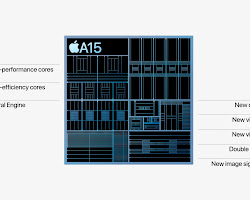
- Qualcomm Snapdragon 8 Gen 1: The Qualcomm Snapdragon 8 Gen 1 is a powerful SoC that is used in many Android smartphones. It is based on the ARMv9 architecture and includes a 3.0GHz octa-core CPU, a 650MHz Adreno 730 GPU, and a 10-core Hexagon 780 AI engine.
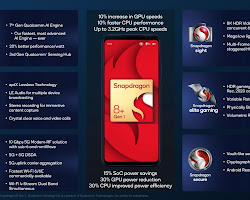
- MediaTek Dimensity 9000: The MediaTek Dimensity 9000 is a powerful SoC that is used in many Android smartphones. It is based on the ARMv9 architecture and includes a 3.05GHz octa-core CPU, a 900MHz Mali-G710 MC10 GPU, and a 18-core APU.
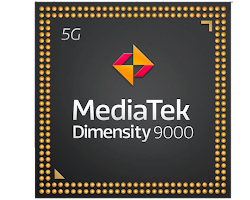
- Samsung Exynos 2200: The Samsung Exynos 2200 is a powerful SoC that is used in many Samsung Galaxy smartphones. It is based on the ARMv9 architecture and includes a 2.8GHz octa-core CPU, a 3.2GHz AMD RDNA 2 GPU, and a 10-core NPU.
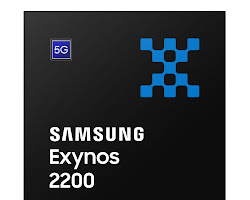
- Google Tensor: The Google Tensor is a powerful SoC that is used in the Pixel 6 and Pixel 6 Pro smartphones. It is based on the ARMv8 architecture and includes a 2.8GHz octa-core CPU, a 200MHz Mali-G78 GPU, and a TPU v4.
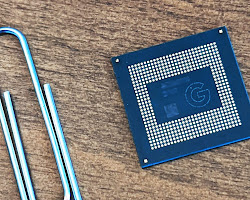
SoM Examples
General SoM Examples
- Industrial automation: SoMs are used to control robots, machine vision systems, and other industrial equipment.
- Medical devices: SoMs are used in patient monitors, infusion pumps, and other medical devices.
- Automotive: SoMs are used in infotainment systems, telematics, and advanced driver assistance systems (ADAS).
- Consumer electronics: SoMs are used in smart TVs, streaming devices, and drones.
- Wearables: SoMs are used in smartwatches, fitness trackers, and augmented reality headsets.
Specific SoM Examples
- Nvidia Jetson Nano: The Nvidia Jetson Nano is a powerful SoM that is ideal for AI and machine learning applications. It is based on the Nvidia Tegra Xavier processor and includes 4GB of RAM and 16GB of eMMC storage.
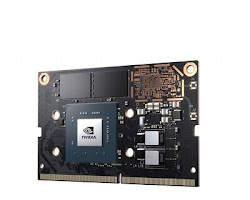
- Raspberry Pi Compute Module 4: The Raspberry Pi Compute Module 4 is a versatile SoM that is popular for a variety of applications, including robotics, home automation, and education. It is based on the Broadcom BCM2711 processor and includes 8GB of LPDDR4 RAM and 32GB of eMMC storage.
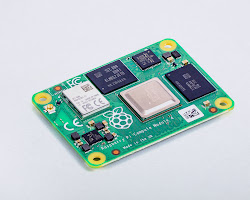
- Arduino Portenta H7: The Arduino Portenta H7 is a powerful SoM that is designed for industrial applications. It is based on the ARM Cortex-M7 processor and includes 1MB of flash memory and 128MB of RAM.
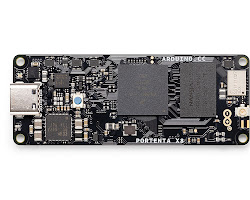
- NXP i.MX 8M Mini Plus: The NXP i.MX 8M Mini Plus is a cost-effective SoM that is ideal for a variety of applications, including automotive, industrial, and IoT. It is based on the ARM Cortex-A35 processor and includes 1GB of RAM and 8GB of eMMC storage.
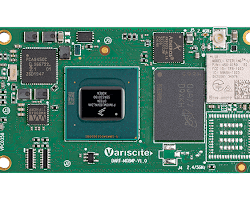
- Allwinner A64-S: The Allwinner A64-S is a powerful SoM that is ideal for video streaming and gaming applications. It is based on the ARM Cortex-A53 processor and includes 4GB of RAM and 32GB of eMMC storage.
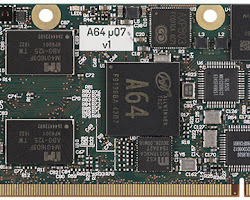
Which is Better? SoC or SoM?
The ideal option for a given application will vary depending on its particular needs. An SoC may be the ideal option if space and power usage are crucial factors. A SoM can be the best option if flexibility is also needed. SoCs are generally a viable option for applications where size and power consumption are important, including portable devices and Internet of Things (IoT) devices. SoMs are a viable option for uses like industrial applications and telecommunications equipment where flexibility is particularly crucial.Conclusion
SoCs and SoMs are two types of integrated circuits that combine multiple components. They have different architectures and are used in different applications. The best choice for a particular application will depend on the specific requirements of that application.Populer Posts
TI60F100S3F2C3
Efinix, Inc.
EP4S40G2F40I1N
Intel
5SGXMA7K3F35C3G
Intel
5CGXFC9E6F35I7N
Intel
EP4SGX180FF35C4
Intel
EP4CE75F23C6
Intel
EP2A25B724C8
Altera
M1A3P250-1FG144
Microchip Technology
10CL080YU484C8G
Intel
EP1SGX25DF672C5N
Altera
EP3SL70F484C2G
Intel
